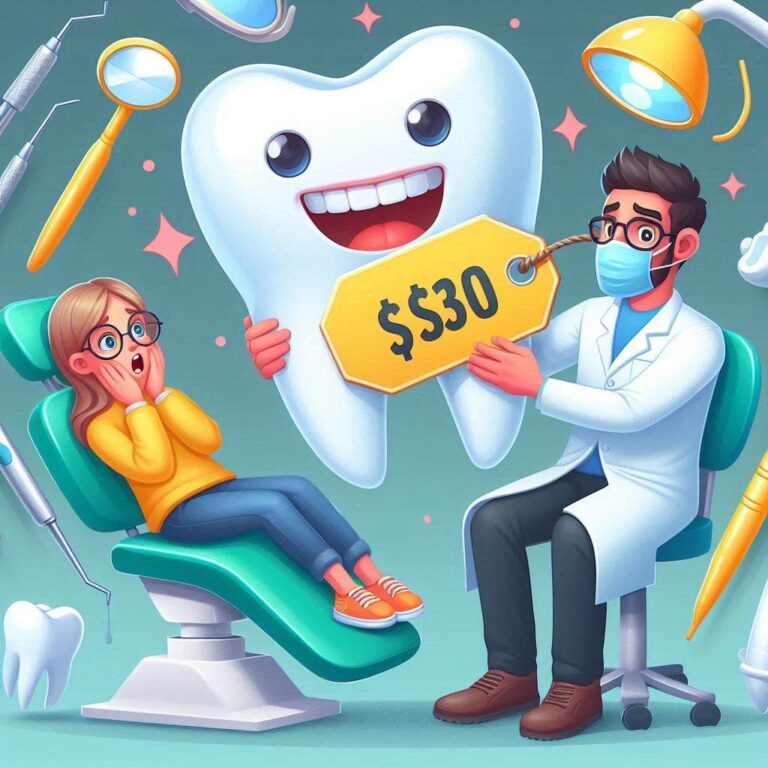Navigating the Maze: Understanding Rotten Tooth Extraction Costs
A throbbing toothache, a dull ache radiating to your jaw – a rotten tooth can disrupt your life in a multitude of ways. While holding onto your natural teeth is always preferable, sometimes extraction becomes the necessary course of action. But beyond the physical discomfort, the looming question of cost can add significant worry. Fear not, for this comprehensive guide delves into the world of rotten tooth extraction costs, equipping you with the knowledge to navigate this financial hurdle.

The Unseen Enemy: Why Teeth Rot
Before diving into costs, let’s understand the culprit behind this dental drama – tooth decay. This progressive condition, fueled by plaque and tartar buildup, erodes tooth enamel, the hard outer layer. Left unchecked, decay penetrates deeper layers, reaching the pulp, the tender core housing nerves and blood vessels. This is where the infamous toothache originates. If decay reaches the pulp, the tooth is considered “rotten” and extraction becomes a serious consideration.
Extraction Expedition: Simple vs. Surgical
The complexity of the extraction significantly impacts the cost. Here’s a breakdown of the two main categories:
- Simple Extraction: This straightforward procedure involves removing a visible, non-impacted tooth using forceps or elevators. Think of it as a relatively uncomplicated eviction for a troublesome tenant.
- Surgical Extraction: This scenario arises when the tooth is impacted (stuck beneath the gum line), fractured below the gum line, or has complex roots. Surgical extractions often involve making an incision in the gum, removing bone tissue, and sectioning the tooth for easier removal. Imagine it as a more involved demolition project.
Cost Castle: A Breakdown of Expenses
Now, let’s delve into the nitty-gritty: the cost of extraction. Several factors influence the final bill:
- Type of Extraction: As mentioned earlier, surgical extractions are significantly more expensive than simple ones. Anticipate a price range of $75-$200 for simple extractions and $180-$550 (or even more) for surgical procedures.
- Location: Dental fees can vary depending on your geographic location. Urban areas with a higher cost of living might have pricier procedures compared to rural areas.
- Anesthesia: Local anesthesia, numbing the area around the tooth, is the most common option for simple extractions and typically comes included in the base price. However, surgical procedures might require general anesthesia, leading to additional costs.
- X-rays: Pre-operative X-rays help dentists assess the tooth’s position and root structure. Expect a separate charge for these.
- Medications: Antibiotics after surgery might be prescribed to prevent infection, adding to the final cost.
- Dentist’s Expertise: Oral surgeons with specialized training for complex extractions typically command higher fees.
Insurance Intervention: Understanding Your Coverage
Dental insurance plans vary widely in coverage for extractions. Here’s a need-to-know:
- Check Your Plan: Carefully review your dental insurance policy to understand coverage for extractions, including deductibles, co-pays, and percentage coverage.
- Pre-approval: Some plans require pre-approval for certain procedures, especially surgical extractions. Contact your insurance provider before scheduling the procedure.
- In-Network vs. Out-of-Network: Using an in-network dentist can significantly reduce costs due to negotiated rates with your insurance company.
Table Time: Unveiling the Cost Spectrum
Here’s a table summarizing the estimated cost range for different extraction scenarios (remember, these are just estimates and can vary depending on your specific situation):
| Extraction Type | Cost Range (Without Insurance) |
|---|---|
| Simple Extraction (Visible Tooth) | $75 – $200 |
| Simple Extraction (Partially Impacted Tooth) | $150 – $300 |
| Surgical Extraction (Wisdom Teeth) | $250 – $800 per tooth |
| Surgical Extraction (Complex Root) | $400 – $1000+ |
Financing Options: Building Bridges Over Financial Hurdles
The cost of a rotten tooth extraction shouldn’t prevent you from seeking the necessary dental care. Here are some financing options to consider:
- CareCredit: This popular healthcare credit card offers financing options specifically for dental procedures.
- Payment Plans: Many dental practices offer in-house payment plans, allowing you to spread the cost over several months.
- Dental Discount Plans: These plans offer reduced fees for dental services, including extractions, for a yearly membership fee.
Avoiding the Rot: Preventive Measures and Alternatives to Extraction
While extraction alleviates pain, it’s always best to prioritize saving your natural teeth. Here are some proactive measures to prevent tooth decay and potentially avoid extraction altogether:
- Brushing Basics: Brushing your teeth twice a day for two minutes each time, using a fluoride toothpaste, is the cornerstone of oral hygiene.
- Flossing Finesse: Flossing daily removes plaque and food particles from between teeth, areas unreachable by brushing alone.
- Diet Diplomacy: Limiting sugary foods and drinks reduces the fuel source for plaque bacteria.
- Regular Checkups: Scheduling regular dental checkups and cleanings allows dentists to detect cavities early and intervene before they become severe.
- Fluoride Fortification: Fluoride strengthens tooth enamel and can even reverse early-stage decay. Discuss fluoride supplements or fluoridated water with your dentist.
Alternatives to Extraction: Exploring Options
Depending on the severity of the decay and the tooth’s location, extraction might not be the only solution. Here are some alternative procedures to consider:
- Root Canal Therapy: This procedure removes infected pulp, preserves the tooth structure, and allows for a crown placement to restore functionality.
- Dental Fillings: For smaller cavities, fillings effectively remove decay and restore the tooth’s shape and function.
- Crowns and Bridges: If the tooth structure is severely compromised but the root remains healthy, a crown can be placed over the remaining tooth structure to restore function and aesthetics. Bridges can replace missing teeth using crowns anchored on neighboring teeth.
The Takeaway: Knowledge is Power
Tooth decay and subsequent extraction can be a daunting experience. However, armed with knowledge about the procedure, cost factors, and available financing options, you’re empowered to make informed decisions about your oral health. Remember, prioritizing preventive care and exploring alternatives can potentially save your tooth and your wallet.
Conclusion
Understanding rotten tooth extraction costs empowers you to navigate this dental hurdle. By considering factors like extraction type, location, anesthesia, and insurance coverage, you can develop a financial plan. Explore preventive measures and alternative procedures to potentially save your tooth. Remember, a healthy smile is an investment worth protecting.
You might also want to check out these articles for more ideas:average cost of tooth extraction by oral surgeon


